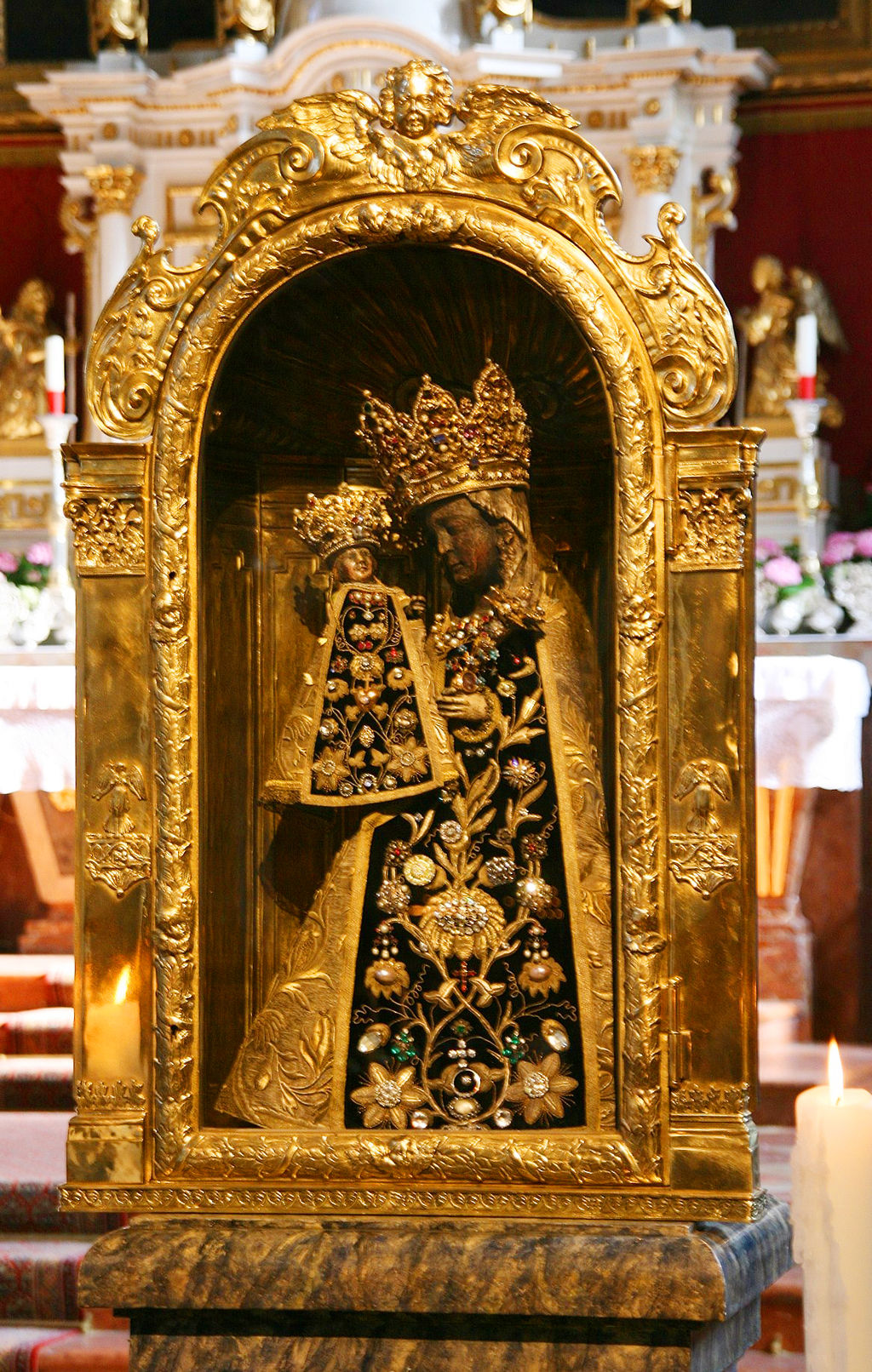Our Lady of a Thousand Names
Mary is our mother, and May is her special month. But who is Mary, really?
Mary of Nazareth was officially declared “Theotokos,” mother of God, at the Council of Ephesus in 431 A.D. This Greek-language title is still used in the Eastern Orthodox churches today. (1)
By the sixteenth century, popular devotion to the mother of Jesus in the Western church had multiplied into many titles. The traditional Litany of Loreto, approved by Pope Sixtus V in 1587, calls her mother, virgin, mirror, vessel, rose, tower, ark, house, gate, star, and queen. These vivid images are repeated, as diverse domains are placed into her care through one of only six litanies formally approved by the magisterium for public recitation. (2)
Those many queenships do not even to begin to exhaust her multitude of names.
All around the planet, there are shrines dedicated to Mary, often titled “Our Lady of …” with place names that have experienced church-approved apparitions and miracles, or with spiritual qualities like “peace, mercy, good hope.”
In their book, Marian Shrines of the United States: A Pilgrim’s Travel Guide, Theresa Santa Czarnopys and Thomas M. Santa, C.Ss.R. highlight more than fifty shrines dedicated to the Blessed Mother in the United States alone. (3)
With her parents, uncle, aunt, and husband Joseph, Mary was a historical human person. She is still remembered in Nazareth by contemporary villagers, whose ancestors have lived there continuously for thousands of years.
I heard one person say, sharing stories passed down in his family for generations, “We’re not sure it’s Joseph’s workshop, exactly. But all the carpenters worked right in this area, they always have, and so it probably looked a lot like this one.”
Those words were offered as a personal testimony when my group of pilgrims viewed an ancient builder’s studio in Nazareth that Israeli archeologists have managed to excavate with painstaking care. A similar tale was told about the ancient well where young Mary went to draw water.
Our faith considers the rosary a worthy meditation on the mysteries of Jesus’ human life; and also, about Mary’s life as his mother. Writings by a plethora of Saints who are formally recognized by the Roman Catholic Church often name the mother of Jesus as their guardian, guide, and friend.
At Our Lady of Lourdes, I was able to view a sign with Mary’s original words when she identified herself to St. Bernadette. By the letters engraved on that bronze plaque, she spoke in the local Pyrenees Mountain dialect, a combination of Spanish and French, probably the only language that Bernadette would have known. In 1858, when asked for her name, Mary said, “Yo soy Immaculata Conception.” “I am the Immaculate Conception.”
I was told, by an official guide there, that the poor young girl had no idea what those fancy words meant. But she memorized them. Only her parish priest, who had recently received the provincial distribution of papal bull Ineffabilis Deus from Pope Pius IX in Rome (4), was able to recognize the meaning of that particular message from Mary.
As Our Lady of Altötting, Germany Mary is said to have guided Joseph Ratzinger from birth to the papacy, through a childhood and young adulthood spent under the horrors of Germany’s Third Reich. His devotion to her has become legendary. Even now, when she temporarily resides in the parish church of St. Michael’s (pictured below) nearby while her ancient chapel is being restored, she carries in her scepter a custom-made sapphire ring. This ring was a gift to Fr. Ratzinger from his brother and sister, when he was appointed to be Archbishop of Munich. In 2006, after he was elected Pope Benedict XVI, Joseph returned to Altötting to give Mary his ring. (5)

At the shrine of Our Lady of Knock in Ireland (pictured in banner), the shrine guide gave us this explanation about nineteenth century Marian apparitions there. (6)
“People always ask, ‘But what did Mary say?’ When we answer, ‘She was silent,’ everyone wonders how it could be, that Mary came among the garrulous Irish and didn’t say a word?
“Wherever she appears, Mary always asks for two things. She tells people to fast, and to pray. She didn’t ask us to fast because she knew we were already starving. She came with St. Joseph at her right, St. John on her left, with the angels and the Lamb on the altar, to show us that she had heard the constant prayers of her faithful Irish children.
“Everyone had lost so many members of their families to death from the Great Hunger, and then from the necessary emigration. The land had been decimated.
“We believe that Mary came just to hold us in her love, and to reassure us that there was a future. She came to bring us hope. She didn’t need to say anything. We all understood.”
© Copyright 2023 by Margaret King Zacharias, Ph.D.
Notes:
- https://en.wikipedia.org/wiki/Theotokos
- https://www.ourcatholicprayers.com/litany-of-the-blessed-virgin-mary.html#:~:text=The%20Litany%20of%20The%20Blessed%20Virgin%20Mary%2C%20also%20known%20as,1587%20by%20Pope%20Sixtus%20V.
- Liguori Publications, Liguori, Missouri, 1998.
- https://www.papalencyclicals.net/pius09/p9ineff.htm
- https://en.wikipedia.org/wiki/Shrine_of_Our_Lady_of_Altötting
- https://www.knockshrine.ie/history/
Photo credits:
Featured photo: Our Lady of Knock Interior Chapel Sculptures Attributions
Page URL: https://commons.wikimedia.org/wiki/File:Apparition_Chapel_with_Stained_Window.jpg
File URL: https://upload.wikimedia.org/wikipedia/commons/8/8a/Apparition_Chapel_with_Stained_Window.jpg
Attributions: KnockShrine, CC BY-SA 4.0 <https://creativecommons.org/licenses/by-sa/4.0>, via Wikimedia Commons
Inset Photo: Image of Our Lady of Altotting
Page URL: https://commons.wikimedia.org/wiki/File:Gnadenbild,_Gnadenkapelle_Alt%C3%B6tting.jpeg
File URL: https://upload.wikimedia.org/wikipedia/commons/e/ed/Gnadenbild%2C_Gnadenkapelle_Alt%C3%B6tting.jpeg
Attribution: Finner: Siddhartha Finner, Dipl.Ing.-Architektur, CC BY-SA 3.0 <https://creativecommons.org/licenses/by-sa/3.0>, via Wikimedia Commons
Licensure: https://creativecommons.org/licenses/by-sa/3.0/deed.en